How IS turned Ramadi into booby-trap city
- Published
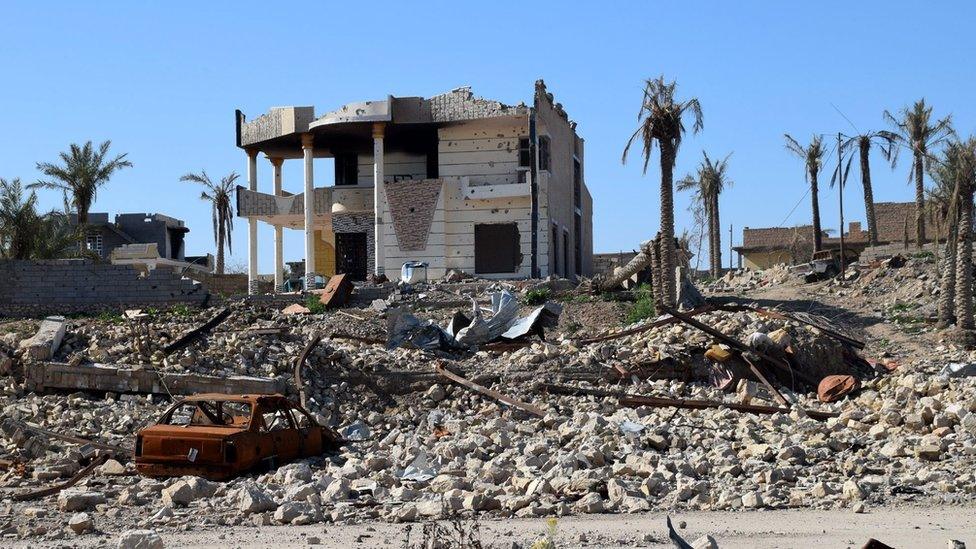
The US-led coalition against IS says the jihadist group caused 80% of the destruction in Ramadi
On the road to the centre of the shattered city of Ramadi, Iraqi soldiers were busy clearing the debris of a destroyed house.
They had to start by retrieving the bodies of comrades killed by bombs planted inside the building by militants from so-called Islamic State (IS).
"We cannot proceed deep inside the city centre. You can wander about this area and this street leading to the local market because they have been cleaned up," our escort, Cpl Arafa Mohammed, of the elite Counter Terrorism Services, warned me and the cameraman.
Booby-traps are one of the weapons of choice for the extremists, who want to carve out large parts of Iraq and Syria for a caliphate based on their unyielding jihadist doctrines. We saw dozens of elements of exploded ordnance by the side of almost every road we went through.
The BBC's Ahmed Maher says Ramadi is "a city without hope"
"If you offered the most experienced engineers in the Iraqi army $1bn, they would still not risk their lives and enter many districts. Nothing is more dangerous than this," said Cpl Mohammed as he drove us through Ramadi in an armoured vehicle.
He then stopped to show us on the roadside at least 20 petrol cans filled with explosives, which he said had been left in homes by IS militants.
"They are criminals," he said. "We have never ever seen or experienced such brutal and destructive tactics before. Entire districts are infested with explosives."
'Scorched earth'
I visited Ramadi in the years before it was taken over by IS fighters in May 2015.
This time, I hardly recognised its main streets. Nearly every structure I saw was destroyed and almost 90% of the city, the heartland of Iraq's Sunni Arab community, is currently deserted.
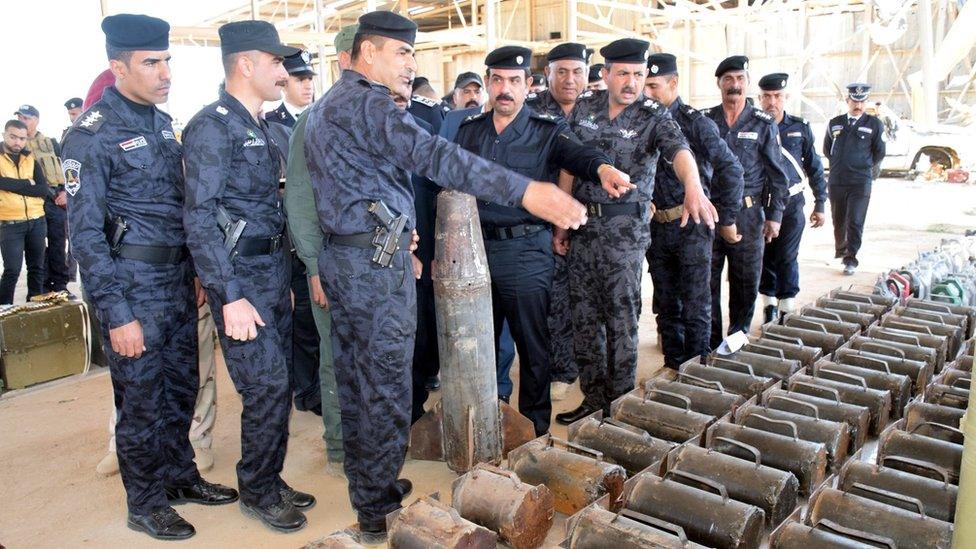
Weapons, munitions and explosive devices left by IS militants have been recovered
Many roads have become impassable and clogged with damaged vehicles and are littered with debris.
We were told that all bridges in the city were destroyed. Had it not been for a temporary bridge constructed by the military, we would not have been able to cross into the city centre.
Air strikes by the US-led multinational coalition against IS positions and shelling by Iraqi government forces since the start of an operation to retake the capital of Anbar province have contributed to the widespread destruction.
However, coalition spokesman Col Steve Warren told the BBC that he believed the IS group was "responsible for 100% of the damage in Ramadi".
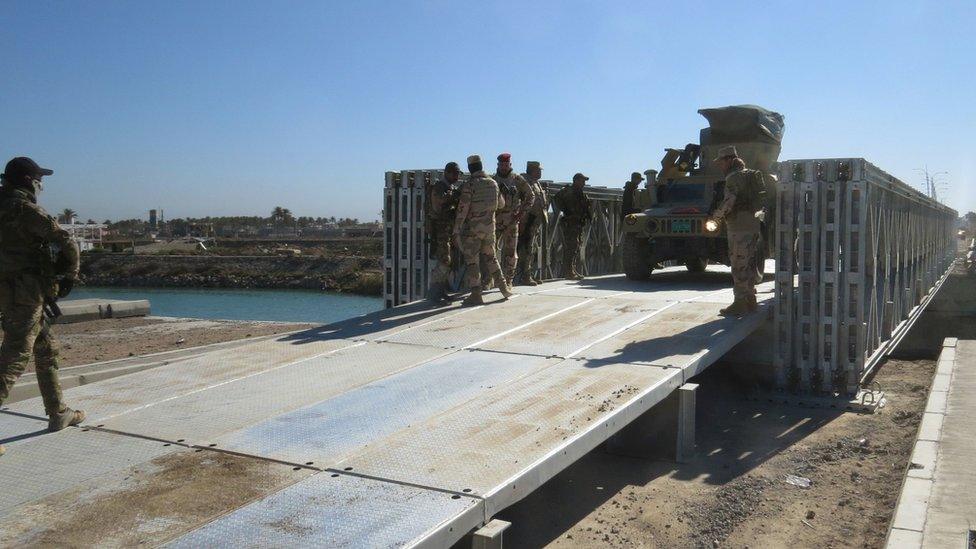
Temporary bridges have had to be built over the River Euphrates, which runs through Ramadi
"Not a single bomb would have dropped if the group had not occupied Ramadi," he added.
"Our analysis indicates that approximately 20% of the damage in the city can be attributed to coalition strikes. The remaining 80% of the destruction was deliberately caused by the IS group.
"We have seen them dig tunnels under homes that cause the homes to collapse. They break holes into walls so they can easily move from house to house. They have rigged entire houses to become IEDs (Improvised Explosive Devices).
"Iraqi forces have reported to us that they have found IEDs in refrigerators and even in copies of the Holy Koran. [IS] deliberately scorched the earth in Ramadi."
Booby-traps
The fatigue from seven months of fighting IS militants was evident on the face of Ragi Hamad, another member of the US-trained Counter Terrorism Service.
He was completely exhausted. The CTS commandos, he said, should not be doing the work of regular army soldiers.

"We are fed up with them," he fumed. "They cannot do anything without us.
"You remember what happened in Mosul? We are supposed to take part in special operations such as freeing hostages or arresting terrorists, but not to liberate entire cities."
He was referring to the army's defeat by IS jihadists in Mosul in June 2014, which shocked many Iraqis.
For Mr Hamad and every visitor to Ramadi since its recapture, the scale of destruction is unbelievable.
"The entire stockpile of US rockets is not enough to bomb the houses booby-trapped by [IS]," Mr Hamad said with a big grin on his face.
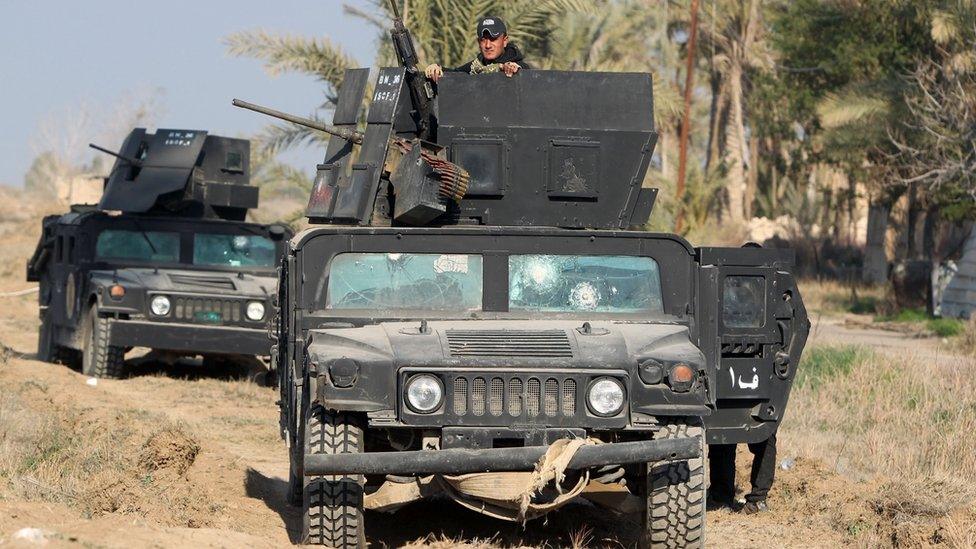
Iraq's elite Counter-Terrorism Service led the government offensive on Ramadi
The United Nations says the destruction in Ramadi is as bad as anything it has seen in Iraq.
"It's hard to imagine the damage that has been done to this city," the UN development programme's resident representative, Lise Grande, told me by email.
"We're extremely worried about the booby-traps that have been laid throughout Ramadi. Removing IEDs is the biggest obstacle preventing families from returning in safety and dignity to their homes in Ramadi."
Funding gap
The Shia-led government's plan to rebuild Ramadi and win back the hearts and minds of its disgruntled Sunni locals also faces another obstacle - but this one financial.
Plummeting global oil prices have sent Iraq's economy into a tailspin.
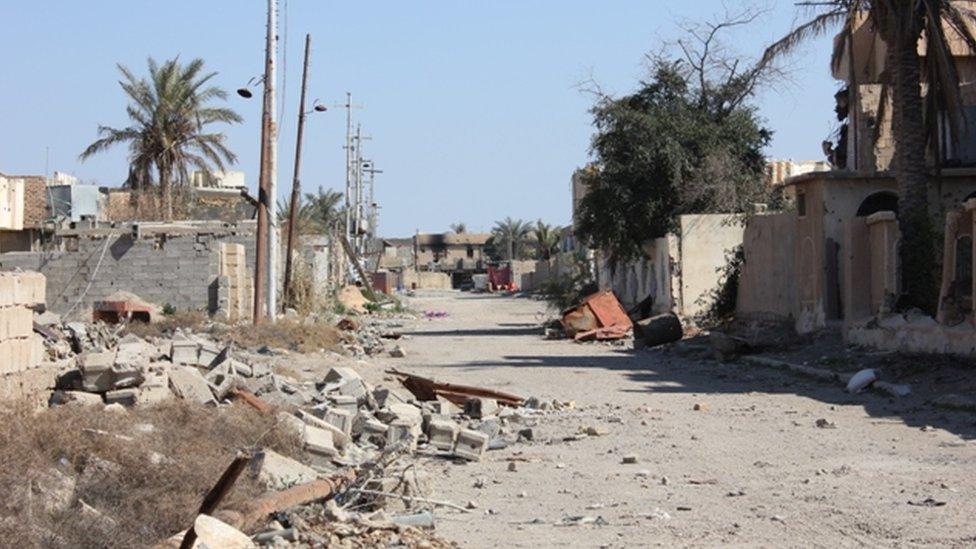
The coalition conceded its air strikes had caused about 20% of the destruction in Ramadi
"The destruction is massive. But we are resolved with the help of Anbar residents to rebuild Ramadi," Anbar Governor Sohib al-Rawi said.
Refusing to give an estimate of how costly the process would be, Mr Rawi noted: "The local councils do not have the necessary funds, but they can seek donations especially from the well-to-do residents of Ramadi."
A few bulldozers and bin lorries joined the governor's convoy from Baghdad to Ramadi, but many more will be required to remove the rubble there.
"We pledge to the people of Ramadi that we will try our hardest to get them back again safely to their areas to help rebuild this precious piece of Iraq," Mr Rawi said enthusiastically.
Hundreds of thousands of Ramadi residents fled for their lives amid intense fighting between government forces and IS militants and allied Sunni tribesmen.
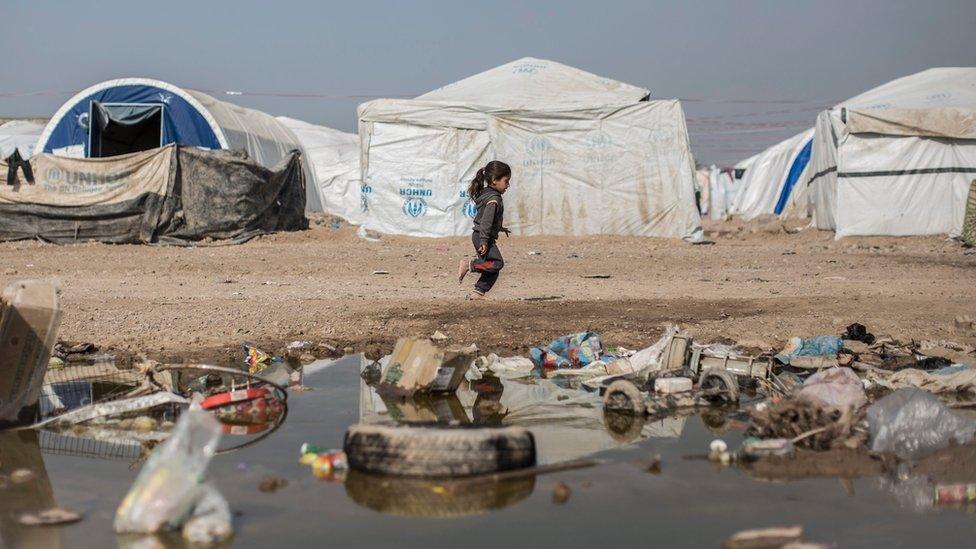
Thousands of Ramadi residents displaced when the city fell to IS are living in camps
Most of them live today in camps on the edges of Baghdad. They are angry, frustrated and exhausted.
Um Haqqi and her family of five have been living in a temporary shelter made of metal sheets and canvas for seven months.
"Why they are leaving us this long in tents? Our children have become sick, diseases are widespread, especially scabies. We can't wait until we return home."
Now Ramadi is lying in pieces, her son Ali Jasim, 46, who lost his leg in an explosion while trying to flee the city, is worried about when and if their home city will be rebuilt.
"If politicians are responsible for the return to our homes then mark my words we will never return. Only God can save us," he says.